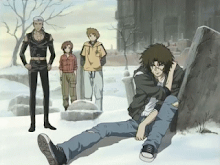
Empress Michiko is the only wife of Emperor Akihito.
She is the first Empress on Japanese history who are from commonage.
She was born in 1934, as a daughter of SHÔDA Eizaburô and his wife Tomiko.
Shôda owned a big food company, Nisshin Seifun, and he was a billionaire.
Therefore, Michiko's girlhood was very rich.
But it was also the era of war.
She lived in Tôkyô, but she must evacuate to escape from bomb by US airplanes.
After the war had ended, she was 11 years old. Japan regained peace, and the economy rapidly developped. It meant her father's business also grew up.
She was in very rich family, but she and her family were frugal.
She was educated in a women's school of catholic, School of Sacred Heart managed by Jesuits.
She loved to pray, and was almost a christian.
But she didn't recieve baptism. Offcourse if she wasn't married with Crown Prince, she would be a christian.
We know her
self-immolating spirit made in the school.But in fact, when she met with Akihito at the first, she was not a christian.
It was very lucky to Prince Akihito. Because if she was a christian, he never could marry with her.
He was the Crown Prince, the oldest son of Emperor Shôwa (Hirohito). Imperial family is the highest oracle of Shintoism.
From a commonsense standpoint, they cannot marry with christians.
On history, imperial brides were provided from imperial family and other five highest ancestries of patricians.
After the war, national system of patrician was already abolished in Japan, but people thought that Crown Prince Akihito's bride would be selected from the traditional ancestries.
But when Akihito watched Michiko in a summer resort Karuizawa, he fell in love soon.
He had deep distress.
At a time in past, it was an honoroble charter to marry with imperial family.
But in the modern time, any pareants didn't want their daugter marry with imperial family.
Because it gives her an uneasy life, it is certain that she becomes unhappy.
So, all dominant candidates of Crown Prince's bride married soon with other males.
Crown Prince was very alone.
He strongly wanted warm home. He was raised separating from his parents and brother and sisters. Because he was the son of nation.
All people around him never gave him serenity. He thought he wo uld die alone.
uld die alone.
But he fell into love.
Michiko was beautiful, elegant, intelligent and very gentle.Many journalists knew that crown prince hobnobbed with the beautiful lady.
But they weren't care. Because she wasn't a daughter of patrician.
They thought she was just a friend.
And she touhght so too.
Offcourse she liked and respected him. He was the Crown Prince. But he was very manly, and very intelligent.
If he was not a prince, he would be loved easily by women.
Michiko respected him as a man.
But that's all.
She knew that her status was low to marry with him.
So, when she was proposed by him, she was very surprised.
Crown Prince's aide KOIZUMI Shinzô, was the president of Keiô University, asked to Emperor Shôwa if he accept or not that his most important son marry with the common woman.
His answer was "YES".
Japan was in new era. In the days, imperial family also needed new princess.
The propose gave much fear to Michiko and her family.
They knew, if she said OK, her life would be so hard. Also her family's life.
Then, University of Sacred Herat gave a chance to her.
She went to Europe as a student ambassador from Japan's Sacred Heart for two months.
It was a plan, for making him gave up.
But he never gave up.
After Michiko returened to Japan, Akihito phoned to her, and he said.
"I had been isolate. I can never die with being isolate."
She whined. And decided.
She knew the way was never easy. But she decided to be with him. She decided so that she never make him isolate. Anymore.
Japanese nations were full of joy with hearing the news.
---to be continued





